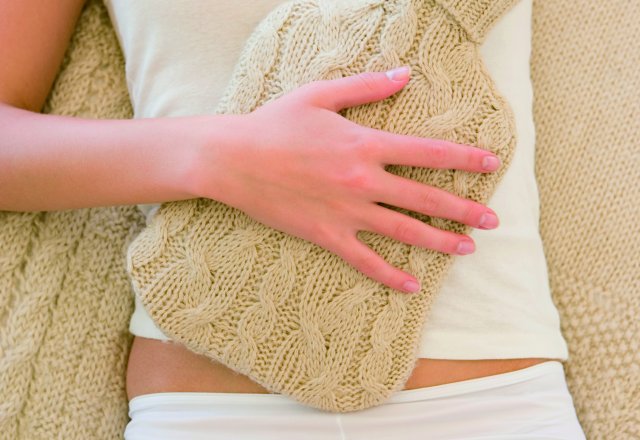
Oestrogen progesterone imbalance

An increasing problem among women
Oestrogen progesterone imbalance is responsible for many health issues, says naturopath Sally Mathrick. Too much oestrogen in relation to progesterone is called oestrogen dominance or excess, and is becoming an increasingly common problem.
Oestrogens are a class of steroid sex hormones. The oestrogens produced in the body are manufactured predominantly in the ovaries; however, the liver, adrenals, breasts and fat cells manufacture small amounts. Oestrogens influence the development and maintenance of secondary female sex characteristics, regulate menstruation and maintain pregnancy and are involved in many other bodily actions of both sexes, including clotting potential of the blood, bone strength, blood vessel maintenance, metabolic rate, bowel motility, muscle mass, fat storage and fluid balance in the body. In men, oestrogens are involved in sperm maturation and libido.
Oestrogens don’t act alone, but are part of a dynamic cascade of many hormones. Progesterone is the major balancing hormone for oestrogen. Prolactin is also a player. When these hormones are balanced, females feel sexy and vital. When they are out of whack, we feel well below optimal and may develop all manner of disorders.
WHAT CAUSES OESTROGEN EXCESS?
There are many theories as to why oestrogen excess is so prevalent today. Ruth Trickey, author of Women, Hormones and the Menstrual Cycle, suggests the major reason is because women have more periods per lifetime than in the past. This is due to starting menstruation earlier, bearing fewer children, lactating less and an older average age of menopause.
Another factor contributing to oestrogen excess is our intake or influence from substances that act in a similar way to oestrogens. Various plants provide us with phytoestrogens. The most notable are soybean and linseeds. Soybean is referred to as the abominable bean by former Hippocrates Health Centre owner Elaine Hollingsworth. She believes eating phytoestrogens, and in particular soy products, contributes to many hormonal diseases, early menarche in young girls and feminisation of boys. Molecules in soy called isoflavones, and in particular genestein, act in a similar, though less powerful way, as oestrogens made inside the body. There is conflicting research suggesting isoflavones and other oestrogenic plant chemicals are ideal to treat hormonal excess, rationalising that the plant version is gentler on the body. Of course, dose is an issue to consider. Soybean is used in many processed foods, and often over-consumed.
One component of plastics, called Bisphenol A, has been confirmed to be polluting us with xenoestrogens – xeno meaning foreign. There are also many chemicals in our environment that have been recognised as endocrine disruptors, particularly pesticides. Many skin care and beauty products contain phthalates, which have a blocking effect on many hormones.
Other environmental oestrogenisation comes from the urine of conventionally reared farm animals and women using the pill, which runs into the water supply. Pharmaceuticals dose people with synthesised oestrogens. The Oral Contraceptive Pill (OCP) and Hormone Replacement Therapy (HRT) often use a form of oestrogen with progesterone to alter natural functioning.
DIETARY DISRUPTORS
Low levels of dietary fibre and high levels of saturated fat can contribute negatively to oestrogen excess, generally via decreasing clearance of oestrogens from the bowel. Additionally, a diet with reduced amounts of fibre and protein (particularly methionine), or deficient in vitamin B6 can contribute to excess oestrogen. If someone is obese, they may be producing more oestrogens in their fat cells than necessary. Exercise, alcohol habits and stress also affect the balance of progesterone and oestrogen.
Finally, an overburdened or under resourced liver is a major player in oestrogen dominance, when its ability to metabolise and clear out this excess of oestrogen is thwarted. The liver metabolises oestrogens in its second phase of detoxification via processes called glucuronidation and conjunction with sulfur. Essentially, these processes are where compounds are added to enable excretion via the bowel or kidneys.
The health and balance of the body is dependent upon the correct functioning of the endocrine system. It’s delicate. Tiny amounts of hormone or hormone-mimicking substances affect it. It is like an orchestra, and when one instrument goes out of tune, quite often others get confused, so oestrogen dominance can negatively affect the balance of the thyroid and adrenal gland.
FINDING BALANCE
A plan for balancing oestrogen must be considered, according to the individual affected. A major tenet of natural medicine is to remove the triggers or causes of the dysfunction wherever possible, so any plan will include ways to avoid xenoestrogens and phytoestrogens.
Avoiding plastic bottles and food wrappings is a small step in the right direction, as is choosing phthalate free body-care products.
Herbs can be very effective when individually prescribed by a trained herbalist. For example, indole-rich Shepherds Purse can help reduce excessive menstruation; phytoestrogenic red clover acts as a blood tonic and can help treat some cancers; St Mary’s Thistle can support a balanced liver clearance of hormones; and bitter Gentian can enhance bile production and increase clearance. Beth root, wild yam, licorice root, vitex and paeony can act to balance some individuals and help regulate ovulation and progesterone production. As the hormonal system is very delicate, it is best to get professional help to ensure safe use of these effective herbs.
Exercise to promote detoxification and circulation. Women who exercise frequently often have lighter and less frequent periods; and address and manage stress in your life.
SIGNS AND SYMPTOMS OF OESTROGEN DOMINANCE
MILD: Often between 15-35 years
Premenstrual Symptoms:
- Breast tenderness
- Mood swings
- Fluid retention
- Weight gain
- Headaches
- Menstrual cramping
MODERATE: Often occurs between 30-40 years
- Irregular menstrual cycle
- Weight gain
- Hair loss
- Depression
- Fatigue
- Thyroid dysfunction
- Adrenal exhaustion/fatigue
- Headaches, migraines
- Severe menstrual cramping
- Heavy, prolonged periods with clotting
- Joint and muscle pain
- Decreased libido
- Insomnia and restless sleep
- Dry eyes
- Prostate issues
SEVERE: Often occurs between 35-50 years
- Uterine fibroid tumours
- Endometriosis
- Fibrocystic breasts
- Polycystic ovary syndrome
- Fibromyalgia
- Infertility
- Thickened uterine lining
- Accelerated aging
- Miscarriage
- Anxiety and panic attacks
- Oestrogen related cancers
- Impotency
LIVER CLEANSERS
There are a number of dietary inclusions that can enhance the liver's effective clearing of excess oestrogens. Cruciferous vegetables, including cabbage and broccoli provide compounds that help to increase the rate that the liver changes oestrogen into a water soluble, excretable form. Brussels sprouts, cabbage, cauliflower and especially broccoli contain a substance called indole-3-carbinol, which supports one of the detoxification pathways to clear oestrogen.
Foods rich in methionine, including beans, legumes, onion and garlic assist in the breakdown of oestrogen. Additionally vitamin B1 and B6 are supportive in hepatic clearance; so legumes, organic chicken, oatmeal, peanuts and walnuts can all be eaten freely. Eat a balanced diet free of hormones, pesticides, and antibiotics, which means choosing organic, biodynamic or spray-free produce whenever possible.
Dietary fibre reduces oestrogen levels, by decreasing enzymes produced by intestinal bacteria (beta-glucuronidase).
High saturated fat diets increase beta-glucuronidase levels, which changes oestrogen to be reabsorbed from the bowel into the body. So reduce saturated fat in the diet and chose monounsaturated fats or essential polyunsaturated fats like fish oils. Probiotics, like lactobacillus acidophilus, found in yoghurt, also reduces the beta glucuronidase activity. There are many ways in which whole-food fibre, from vegetables, fruit and wholegrains, combined with a low saturated fat intake, helps to reduce oestrogen excess.
Perhaps the most important element of balancing excess oestrogen is to relax regularly. Allow the relaxation response to permeate your body, and the master gland conducting the orchestra can revert to normal.
Naturopath Sally Mathrick practises and teaches naturopathy in Victoria. Her specialisation in natural medicine is cleansing, detox and integrative medicine. She runs Sparkle Wellness and Detox courses, workshops and retreats for public and company groups. She is a director of the Byron Integrative Medicine Conferences, which support a collaborative medicine approach for best patient care. See www.soundmedicine.com.au for more information.


